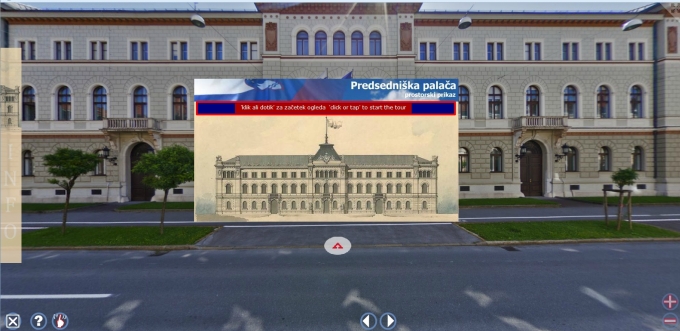Presidential palace

November 2013 mark the 115th anniversary of the palace on Prešernova street in Ljubljana. The building's very design is designated for government use. Until 1918 the palace used to be the seat of the Carniolan provincial government under Austria - Hungary, followed by the National Government, the mayors of Ljubljana and, following World War II, the Executive Council of the Slovenian Assembly and the Constitutional Court. In 1975 the Slovenian Presidency moved into the edifice, and since 1993 the Presidential Palace has been the home of the Office of the President of the Republic of Slovenia and The Secretariat-General of the Government of the Republic of Slovenia.
Architecturally, it is one of Ljubljana's landmark buildings, designed by engineer Rudolf Bauer and constructed by the Carniolan Building Society, which began works in 1886. The three street facades boast three floors, while the fourth, courtyard facade is one floor lower. Two sitting statues representing power and justice, the work of Viennese sculptor Josip Beyer, adorn the front entrance from Prešernova street. The largest room in the palace, the Crystal Hall, today a reception hall, was originally a chapel. After World War II it was transformed into a conference hall where sessions of the Government were held. The architecture and design elements make this hall one of the most beautiful of its kind in Slovenia.
During the past 110 years the building's neo-renaissance image remained largely untouched both inside and outside. The only major change to its exterior shape is an oval wall closing-off the courtyard terrace. The Presidential Palace, a cultural monument, still dominates Ljubljana's image in this part of the city. Similar palaces that served as the seats of provincial governments are found only in Sarajevo and Vienna.
.

Virtual tour through the Presidential Palace


